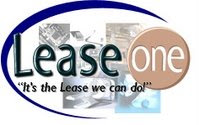
Entrepreneurs who helped build their startups into tech stalwarts—companies like Cisco, Oracle, and Google—share lessons on how to thrive during tough times
By Spencer E. Ante
December 1987 was no time to be raising money for a startup. Computer engineer Len Bosack was trying to attract funding for a young enterprise called Cisco Systems (CSCO). But the stock market had just crashed and the Dow Jones industrial average had plummeted 40% since October. Gun-shy venture capitalists either didn't get the newfangled technology or deemed it too risky.
Making matters worse, Bosack was running low on the savings he had used to bootstrap the business, and competition was gaining steam. It wasn't until this 75th meeting that he found a receptive audience. The willing financier was Donald Valentine of Sequoia Capital, a venture capital firm in Silicon Valley. On Dec. 14, two months after Black Monday, Sequoia invested $2.5 million in Cisco. "Valentine's reasoning was pretty simple," Bosack recalls. "It doesn't matter what they are. They are selling stuff in a bad market. With a little bit of capital and more experienced help they should be able to do better."
Better is just what Cisco did. By the time of its initial share sale three years later, in February 1990—during a recession—the maker of telecom networking equipment was worth $224 million. Within a decade, Cisco Systems had become one of the world's most valuable companies.
Greatness Can Emerge from a Slump
Today, some of America's sharpest financiers and entrepreneurs say Cisco's story holds a profound lesson easily forgotten amid financial turmoil: Great companies can be built during tough times. "For us, Cisco is always the company we think of when we think about bad times," says Michael Moritz, a general partner with Sequoia Capital who was a young associate when the firm made its investment.
Cisco is just one example. In the history of technology, many other great companies either were founded during downturns or forged business models during bad times. In 1939, at the tail end of the Great Depression, two engineers started Hewlett-Packard (HPQ) in a garage in northern California. During the recession of 1957, Digital Equipment, the first computer company to challenge IBM (IBM), set up shop in a Civil War-era wool mill, sparking a high-tech boom in Massachusetts. "It makes sense to do research and development counter-cyclically," says Tom Nicholas, associate professor in the Entrepreneurial Management Group of Harvard Business School. "Recessions can be really useful strategic opportunities."
Entrepreneurs, financiers, and historians point to several reasons for this phenomenon. For starters, everything is cheaper during a downturn, including the cost of labor, materials, and office space. There's less competition, both from incumbents that are trying to put out their own fires and from startups that find it harder to raise money. And the tough times force entrepreneurs to work on their business models earlier, so they end up reaching profitability more quickly than when money comes cheap. "The companies are tougher because they were tested during a tougher time," says Carl Schramm, president of the Kauffman Foundation, an organization that promotes entrepreneurship.
In fact, Silicon Valley itself was largely created during the nasty recession of the mid-1970s. During that decade, entrepreneurs and financiers built companies that pioneered three entirely new industries: video games through Atari, personal computers with Apple (AAPL), and biotechnology thanks to Genentech (DNA).
Find Your Passion
Talk to the entrepreneurs who built great companies during bad times, and they'll tell you there are a number of lessons that help explain their success. Atop the list: Founders of the most successful companies are motivated less by the lure of riches than the dream to solve an important problem and benefit the world. As a young, self-taught computer engineer, Mitch Kapor saw an opportunity in the early 1980s, another recessionary period, to create software tools for personal computers that would help businesses be more productive. So in 1982 he founded his own software company called Lotus.
The startup was an immediate hit because it was the first software program to demonstrate the value of a personal computer to the business world. During an October 1982 conference, Kapor showed off his initial product, Lotus 1-2-3, the first software tool to integrate spreadsheets and graphing programs. After taking $900,000 in orders during the conference, he had to tear up all of his sales forecasts. "It was one of the biggest shocks of my life," he recalls. "It turned out there was an enormous latent demand for what we did."
Kapor also noticed that market leaders such as Microsoft (MSFT) had taken their eyes off the ball. In 1981, IBM had introduced its first PC with a 16-bit microprocessor. Microsoft, contracted to provide the operating system for IBM, was also building a spreadsheet, but it was based on code built for machines with slower, 8-bit processors. Kapor realized Microsoft had left him an opening. He set about creating spreadsheet software tailored to the new chips. In 1983, its first full year of business, Lotus sold an astonishing $53 million in software. "If a product meets an unmet need, it doesn't matter if the economy is bad," Kapor says.
Cater to Your Market
Another key lesson is to pick markets strategically, says Umang Gupta, who joined database maker Oracle (ORCL) in 1980 as employee No. 17 and wrote its first business plan. Ultimately, the company wanted to build a database program that would work with multiple types of computers, from minicomputers to PCs to mainframes, those hulking machines that crunched massive amounts of data. But Oracle couldn't do it all at once. It started out creating a database that worked on minicomputers such as Digital Equipment's PDP-11. Then Oracle methodically went upstream, pursuing mainframes next, rather than going for mainframes and PCs at the same time. "We concentrated our bets," Gupta says. "We built a culture of an extremely focused, aggressive company."
For some companies, it may be tempting to slough off belt-tightening customers loath to place new orders amid a slump. Bad move, financiers say. The best companies go the extra mile during a cold spell, engendering goodwill that pays off when the economy bounces back and companies have more money to spend.
At Cisco, Bosack launched a customer advocacy group, one of whose jobs was to help customers design their computer networks before they spent even one penny with the company. Employees would spend weeks holed up in the basements of customer offices fixing the glitches that popped up. "We were happy to help," Bosack says. "We didn't expect a big order… People sell products today and abandon their customers. It's bad business."
Embrace Frugality
Almost all great companies built during bad times also learn how to run extremely efficiently. Workers wear multiple hats, buy used furniture, and look for any way to cut costs. Tales of frugality are legendary in the tech industry. At the headquarters of Digital Equipment, the company's founders didn't even go to a garage sale. They appropriated desks that had been left by the previous tenants, and they didn't install doors, even in bathrooms, because they cost too much.
But while companies need to watch their bottom line, downturns also present an excellent opportunity to hire high-quality labor on the cheap. A lot of good talent gets laid off during downturns, and workers are more open to joining new companies since there are fewer jobs to be had in big corporations.
After the dot-com bust early this decade, Google (GOOG) took huge advantage of the surfeit of talent. At the end of 2001, Google had 281 full-time employees. By the end of 2004, the number had swelled to more than 3,000. Those employees, many of whom Google poached from big rivals such as IBM and Microsoft, allowed Google to handle and generate explosive growth. In 2001, Google earned $7 million on $86 million in sales; by the end of 2004, Google reaped $399 million in profit from $3.2 billion in sales. "When I joined Google we were the only place hiring," says Sheryl Sandberg, a former executive at Google who is now the chief operating officer of Facebook.
There's Room for Optimism
Today, when venture capitalist Moritz surveys the economy, he admits times are sobering. It was his venture capital firm that spooked the entire tech industry with a presentation, leaked on the Web, that was titled "RIP: Good Times" and detailed for startups the gloomy state of the economy. As he and others have noted, selling anything in this economy is more of a challenge. And it's harder than ever to raise money because the IPO market is dead and mergers have dried up.
Moritz nevertheless sees a lot of opportunity, and says great companies will emerge from this downturn, just as they have in the past. "Things get overblown in the Valley," he says. "As the obituaries are currently being penned, those are overstated, too. Good ideas and brilliant people will find us very willing to step out into the cold with them. It's as easy for me to be excited today by the unknown 23-year-olds as I was in the past."


No comments:
Post a Comment